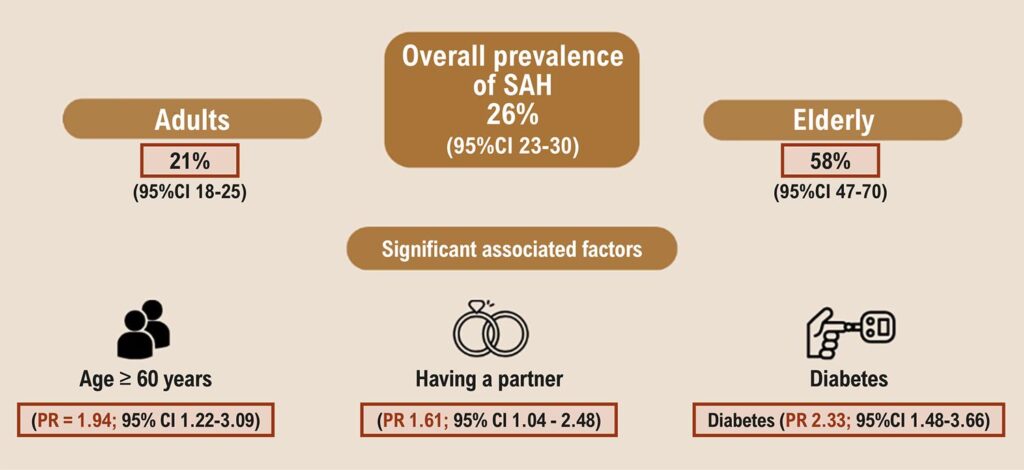Arq. Bras. Cardiol. 2025; 122(9): e20250269
Prevalence of Systemic Arterial Hypertension and Associated Factors in Indigenous Treated at a Specialized Outpatient Clinic in Southern Brazil
Abstract
Background
The increasing occurrence of systemic arterial hypertension (SAH) is associated with multifactorial conditions, including lifestyle changes among Indigenous populations.
Objective
To estimate the prevalence and identify factors associated with SAH among Indigenous individuals receiving care at a specialized outpatient clinic in southern Brazil.
Methods
This cross-sectional study was conducted with a sample of Indigenous individuals of both sexes aged 20 years or older, using data collected from medical records. Hypertension was defined as the dependent variable based on the recorded diagnosis, for which prevalence was estimated with a 95% confidence interval (95% CI). Sociodemographic, health-related, and behavioral characteristics were analyzed as potential associated factors through estimates of crude and adjusted prevalence ratios (PR), along with their respective 95% CIs.
Results
The sample consisted of 570 Indigenous individuals, with a SAH prevalence of 26% (95% CI: 23–30). The associated factors were age 60 years or older (PR = 1.94; 95% CI: 1.22–3.09), having a partner (PR = 1.61; 95% CI: 1.04–2.48), and a diagnosis of diabetes mellitus (PR = 2.33; 95% CI: 1.48–3.66).
Conclusion
The prevalence of SAH was found to be high, reinforcing its significance as a public health issue within the Indigenous population as well. These findings underscore the need to strengthen primary health care with an emphasis on prevention, early diagnosis, and proper management
31

